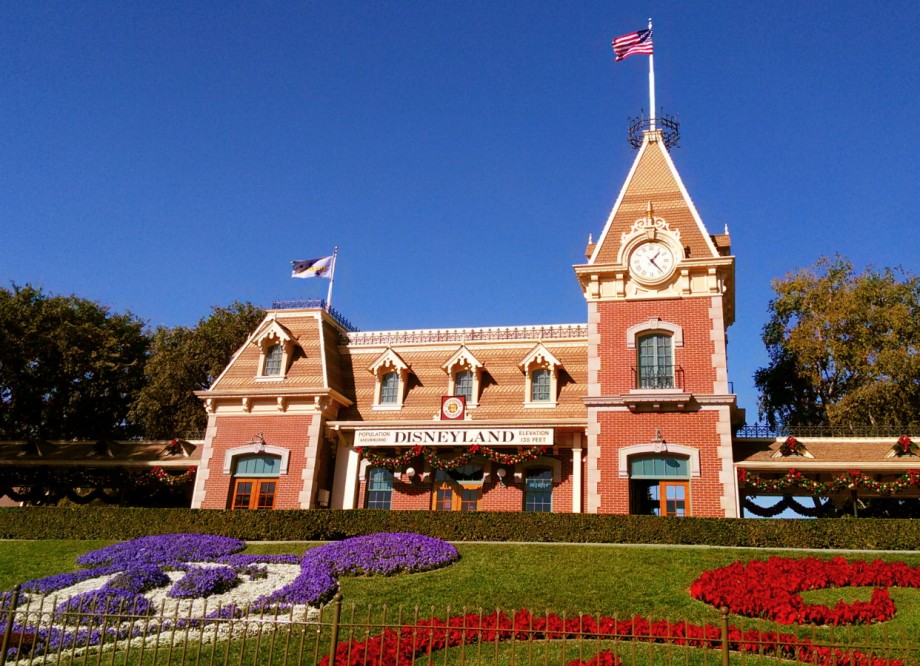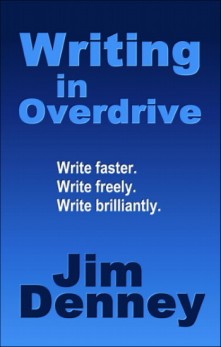by Jim Denney,
author of Walt’s Disneyland and Writing in Overdrive
“Walt Disney was more important than all the politicians we’ve ever had. They pretended optimism. He was optimism. He has done more to change the world for the good than almost any politician who ever lived.” —Ray Bradbury
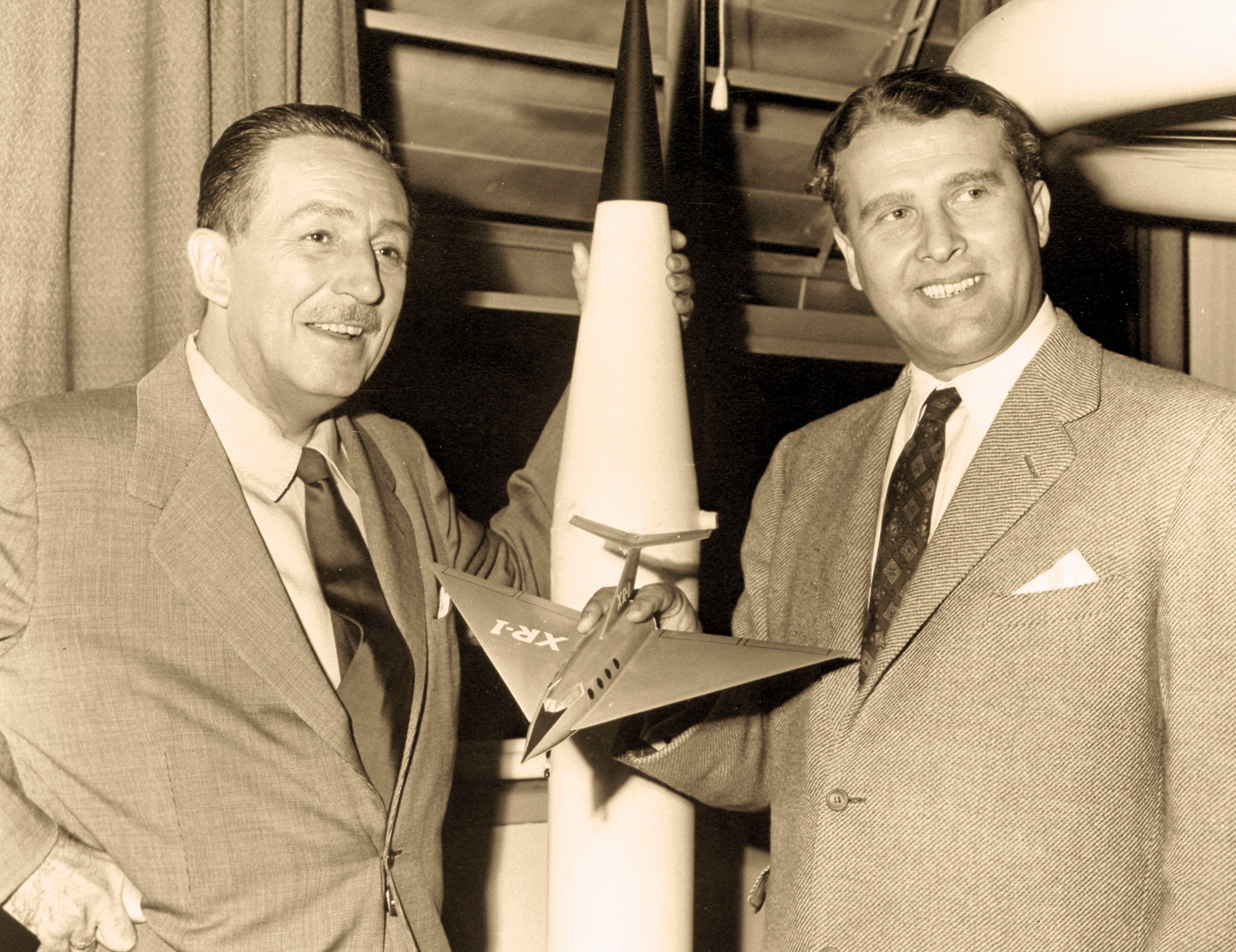 Most people think of Walt Disney as a businessman who founded a company and hired other people to do all the creative work. Not true.
Most people think of Walt Disney as a businessman who founded a company and hired other people to do all the creative work. Not true.
 I have written three books on Walt Disney — How to Be like Walt and Lead Like Walt, both co-written with Orlando Magic exec Pat Williams, and my own book Walt’s Disneyland. While researching these books, I discovered that the most creative person in the Disney organization was Walt himself. He was a fountain of ideas and imagination — yet he rarely gets the credit he deserves for his creativity.
I have written three books on Walt Disney — How to Be like Walt and Lead Like Walt, both co-written with Orlando Magic exec Pat Williams, and my own book Walt’s Disneyland. While researching these books, I discovered that the most creative person in the Disney organization was Walt himself. He was a fountain of ideas and imagination — yet he rarely gets the credit he deserves for his creativity.
The reason Walt is thought of as a businessman rather than a creative genius is that he expressed his creativity through the medium of people — writers, artists, songwriters, directors, and Imagineers. Most of the cartoons and feature films produced by the Disney studio began in the mind and soul of Walt himself — then he communicated his creative vision to his artists, and they carried it out.
The same is true of Disneyland. All the original attractions, as well as the hub-and-spoke layout of Disneyland, were fully formed in Walt’s imagination long before he told anyone about his dream.
 During the weekend of September 26 and 27, 1953, Walt huddled with artist Herb Ryman at the Burbank studio. The two men worked for forty-eight hours without sleep. Walt described his vision of Disneyland, and Ryman translated Walt’s words into a map, three feet tall and five feet wide, that the Disney Company used to pitch the Disneyland TV show to the networks. (To learn more about the history of that map, read “Walt, a Man Named Grenade, and the First Map of Disneyland.”)
During the weekend of September 26 and 27, 1953, Walt huddled with artist Herb Ryman at the Burbank studio. The two men worked for forty-eight hours without sleep. Walt described his vision of Disneyland, and Ryman translated Walt’s words into a map, three feet tall and five feet wide, that the Disney Company used to pitch the Disneyland TV show to the networks. (To learn more about the history of that map, read “Walt, a Man Named Grenade, and the First Map of Disneyland.”)
The map Herb Ryman drew under Walt’s direction was amazingly close to the actual design of Disneyland when it opened on July 17, 1955. The only major difference was that the map showed Adventureland to the east of Main Street instead of the west. Disneyland was a fully-formed kingdom in Walt’s imagination long before Herb Ryman inked a single pen-stroke.
 The most popular attractions in the Park were all conceived by Walt —the Disneyland Railroad, the Mark Twain riverboat, the Jungle Cruise, Sleeping Beauty Castle, all of Fantasyland, the Monorail, the Matterhorn Bobsleds, Pirates of the Caribbean, and so much more. Walt was a creative genius — and as I studied his creative process, I uncovered insights that have made me a better writer. I think they’ll change the way you write as well:
The most popular attractions in the Park were all conceived by Walt —the Disneyland Railroad, the Mark Twain riverboat, the Jungle Cruise, Sleeping Beauty Castle, all of Fantasyland, the Monorail, the Matterhorn Bobsleds, Pirates of the Caribbean, and so much more. Walt was a creative genius — and as I studied his creative process, I uncovered insights that have made me a better writer. I think they’ll change the way you write as well:
Insight No. 1: Mine Your Life Experiences
Walt owed much of his creativity to his warm childhood memories — and his bitter memories as well. Walt had two very different childhoods, one idyllic and happy, the other painful and harsh. He spent his first childhood — his happy childhood — on a farm outside of Marceline, Missouri, from ages four through nine.
He once told The Marceline News, “More things of importance happened to me in Marceline than have happened since — or are likely to in the future. Things, I mean, like seeing my first circus parade, attending my first school, seeing my first motion picture.”
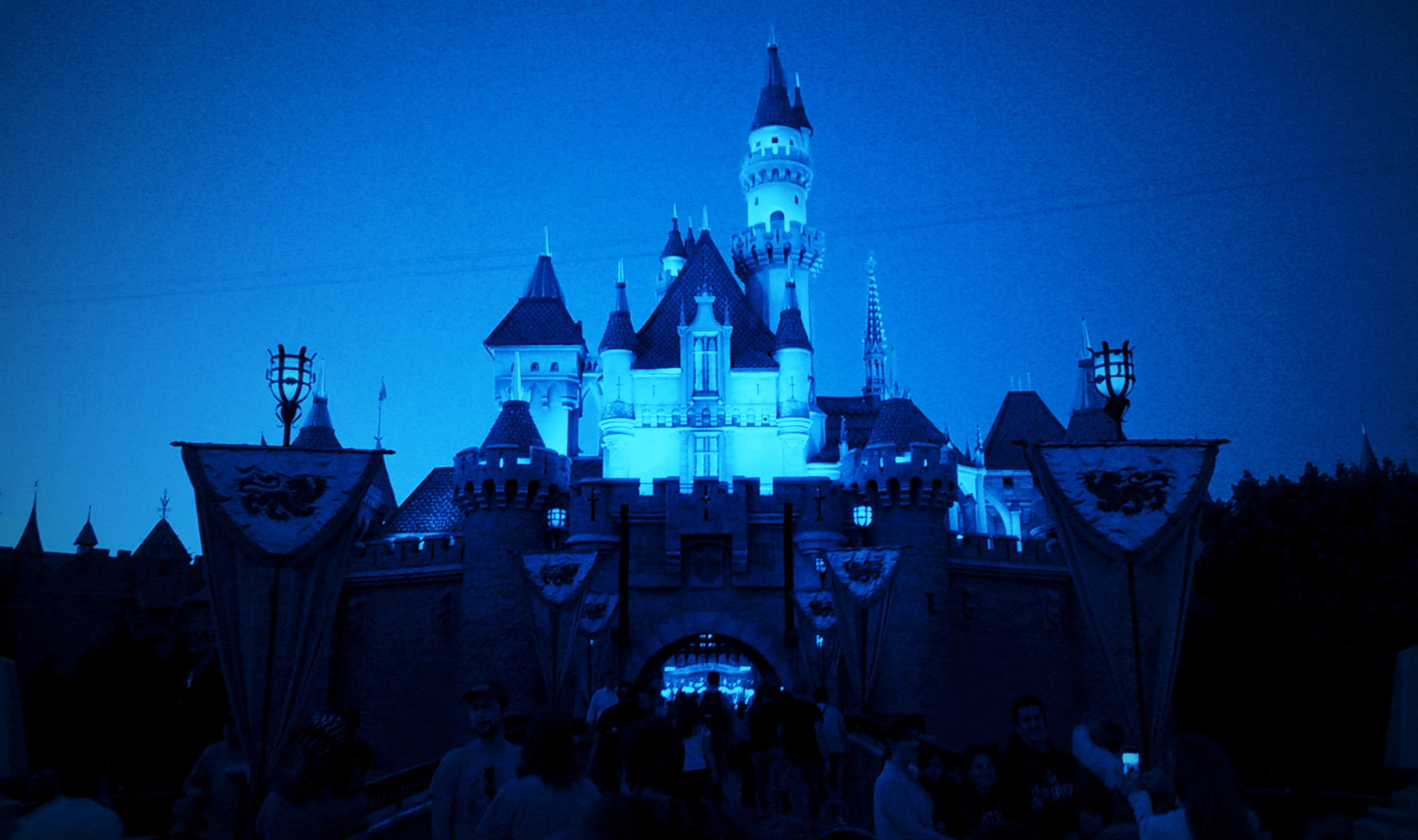 As a filmmaker and theme park creator, Walt drew upon his Marceline years for inspiration. His early cartoons, his feature films, and Disneyland itself are rich in idealized images of life in rural and small-town America. Many scenes from Walt’s early life appear in his films. For example, the enraged bull that chases Bobby Driscoll in Song of the South reenacts the time young Walt and his sister Ruth were chased across a field by a bull.
As a filmmaker and theme park creator, Walt drew upon his Marceline years for inspiration. His early cartoons, his feature films, and Disneyland itself are rich in idealized images of life in rural and small-town America. Many scenes from Walt’s early life appear in his films. For example, the enraged bull that chases Bobby Driscoll in Song of the South reenacts the time young Walt and his sister Ruth were chased across a field by a bull.
Walt’s happy childhood ended when his father, Elias Disney, became ill and was forced to sell the Marceline farm. Walt thought of the farm animals as his friends, and he wept as they were auctioned off. That’s when his unhappy childhood began.
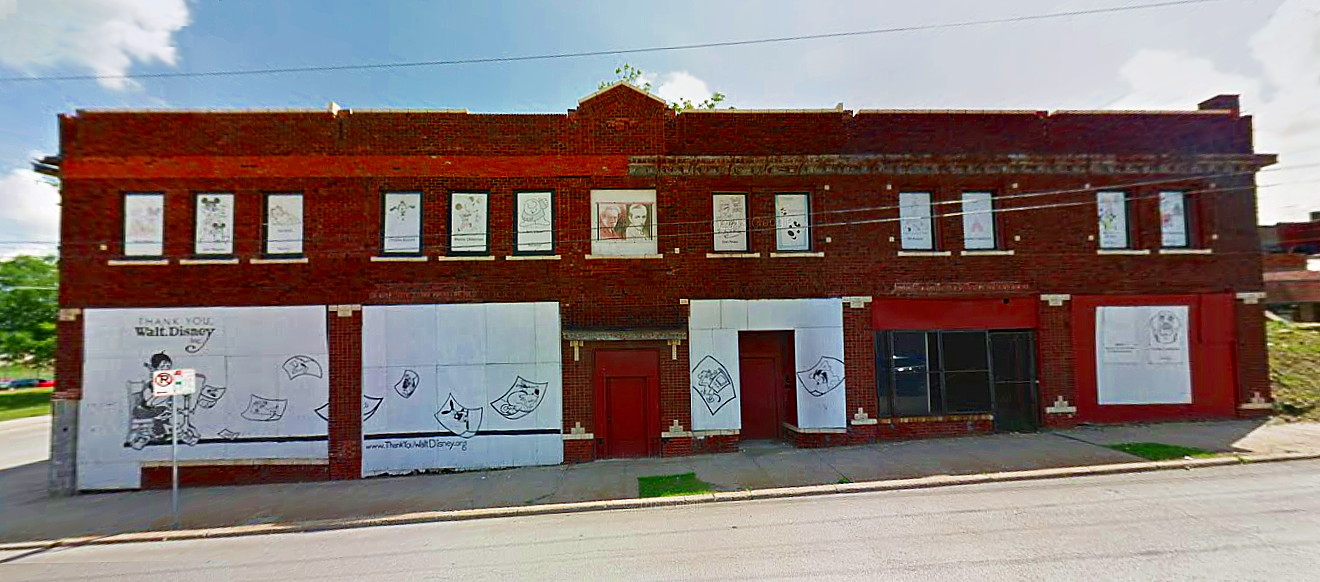

The Disneys moved to Kansas City, where Elias bought a newspaper distributorship. He put Walt and his brother Roy to work delivering papers without pay. Walt and Roy arose at 3:30 in the morning, and sometimes waded through waist-high snowdrifts to make their deliveries. Walt arrived at school completely exhausted, and often slept in class. After school, he worked at a candy store.
You won’t find references in Walt’s movies to his unhappy Kansas City boyhood — yet Disneyland represents one of the few bright spots in Walt’s Kansas City years. He grew up fifteen minutes away (by streetcar) from Electric Park, a huge amusement park that featured band concerts, a carousel, boat rides on a lagoon, a wooden roller coaster and other thrill rides. A steam train ran around the park, and a fireworks show lit up the nights.
If that sounds a lot like Disneyland, there’s good reason for that. Walt later said that Disneyland “has that thing — the imagination and the feeling of happy excitement — I knew when I was a kid.”
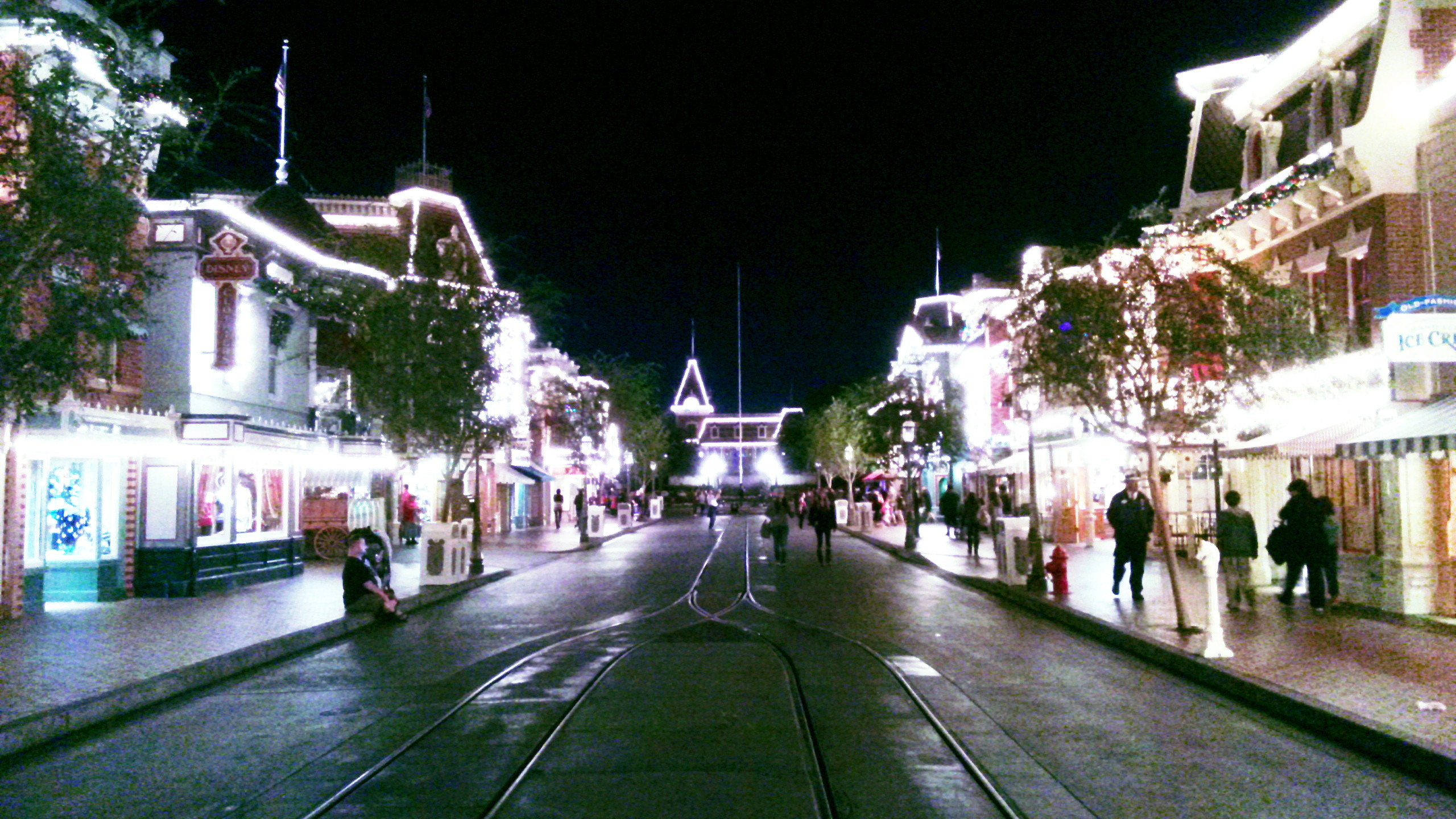
Disneyland’s Main Street USA at night. Below: Electric Park, circa 1915.
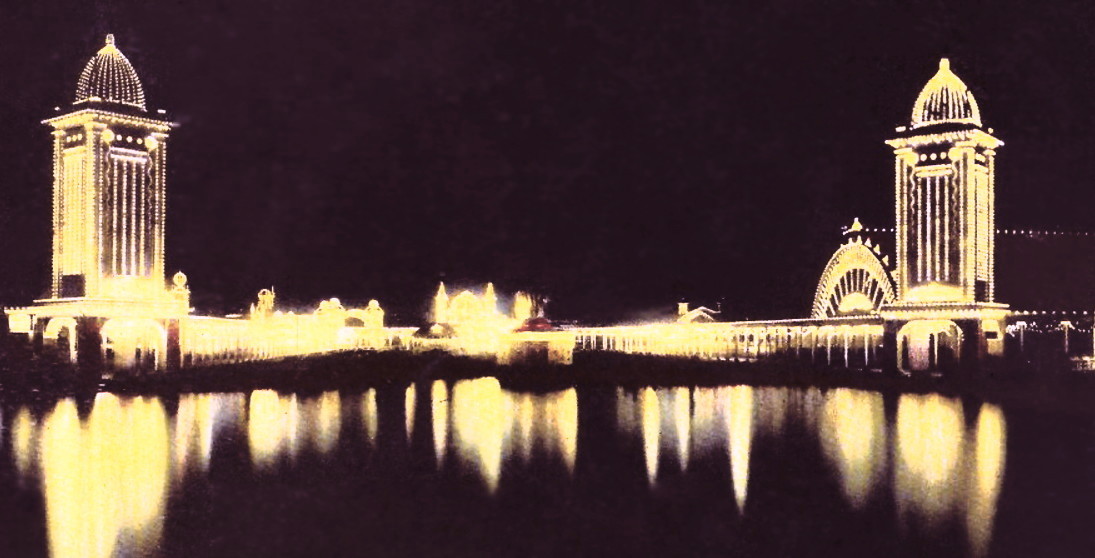
Walt couldn’t afford the price of admission (ten cents), but he and his sister Ruth often sneaked into the park. Walt also visited Electric Park in the early 1920s (this time as a paying customer), when he owned the Laugh-O-gram animation studio in Kansas City. His studio was just two miles from Electric Park, and he and his animators often went there to unwind.
Disneyland not only re-creates the world of Walt’s nostalgic memories. It captures Walt’s boyhood obsessions. Fantasyland transforms the fairy tales of Walt’s childhood into a fully immersive fantasy experience. Tom Sawyer Island and the riverboat bring to life the fondly-remembered Mark Twain tales he loved. Tomorrowland is the realization of Walt’s boyhood fascination with the futuristic novels of Jules Verne and H.G. Wells.
Walt teaches us that our lives are a gold mine to be dredged for memories, emotions, and ideas. The lesson of his life is that we, as writers, should regularly ask ourselves:
What were the turning points in my life?
What are the most important lessons my life has taught me?
What am I nostalgic about? What are the experiences that hurt me? Frightened me? Thrilled me? Comforted me?
What were the stories, ideas, and places that captured my young imagination?
These are the things we must write about.
These experiences make us unique and creative: joys and sorrows, fears and fascinations, hard realities and flights of imagination. Walt didn’t merely tap into his memories and experiences. He plunged into his youthful obsessions: the Peter Pan stage show he saw as a boy, and the books he loved, from Alice in Wonderland and The Wind in the Willows to The Adventures of Tom Sawyer and Treasure Island.
So peer deeply into the gold mine of your life. Pick up and examine every shiny nugget of your past. Remember all the stories you read and objects you collected and places you explored in childhood. Remember the joys — and the pain. Seize the inspiration that’s there for the taking — then start building your own Disneyland out of words and memories.
Insight No. 2: Become an Actor
Walt Disney had the soul of an actor.
As a boy, he amused his classmates with impressions of Charlie Chaplin. He once came to school in a shawl, stovepipe hat, and fake beard, and delivered the Gettysburg Address as President Lincoln. He also donned his mother’s dress, hat, and wig, then rang the doorbell and carried on a conversation with his mother, pretending to be a neighbor lady. They talked for several minutes before his mother realized the “lady” was her own prankster son.
Walt loved to perform. One night in early 1934, Walt assembled his artists in a darkened soundstage at the Burbank studio. He stepped into the spotlight and told them they were going to make a fully animated feature-length film, Snow White and the Seven Dwarfs.
Then he proceeded to act out the entire film. He performed each character, from Snow White to the evil Queen to each of the seven dwarfs. He became the characters, speaking in their voices, gesturing with their mannerisms. It was a three-hour bravura performance.
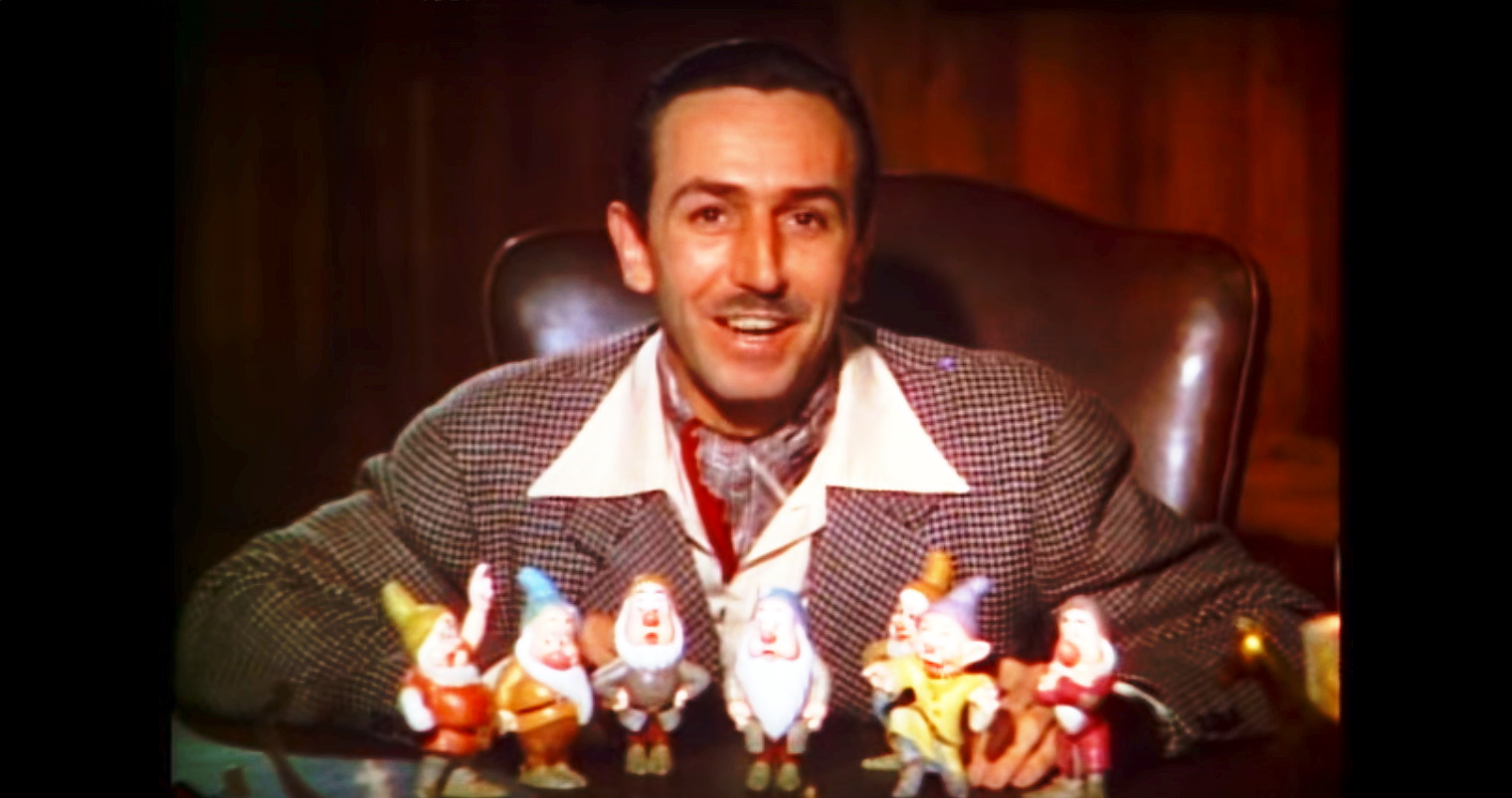
As Walt finished, his animators broke out in applause. Years later, one of the animators who was there that night told interviewer Robert De Roos, “That one performance lasted us three years. Whenever we’d get stuck, we’d remember how Walt did it on that night.”
To be creative like Walt, become an actor. When you write, act out your character’s voice and gestures. This works best, of course, when you write using voice dictation instead of a keyboard. But if you write by typing, then simply act out your scene before you type.
Get out of your chair, walk around the room, and become your characters. Act out the scene and experience the emotions of your characters. Then sit down and immediately write the scene. You’ll find added power and energy in your writing, and it will transform your creative process.
Insight No. 3: Write Your Obsessions
In Pinocchio, Jiminy Cricket sings that when we wish upon a star, our dreams come true. That’s a pretty sentiment — but wishing on a star didn’t build the Disney studio in Burbank or Disneyland in Anaheim. Walt Disney’s legacy of success was built on a foundation of courageous vision, bold risk-taking, intense focus, and an unwavering obsession with his goals. And, of course, it was built on hard work.
Walt was never content with the status quo. He was determined to keep challenging himself and leading his studio in new directions. He was always eager to attempt what had never been done before. He followed Snow White with Pinocchio, then Fantasia, then Dumbo, then Bambi — each film a radical departure from anything he had ever done before. That’s why Salvador Dali declared him one of the great Surrealist artists of the time.
When Pat Williams and I were writing How to Be like Walt, director Ken Annakin (Swiss Family Robinson) told us that the key to Walt’s creativity was his obsession with his dreams. Annakin said, “I doubt whether one person in fifty million is capable of the obsessive focus with which Walt lived each day of his life. His grand obsession was simply to bring happiness to others. It made him who he was.”
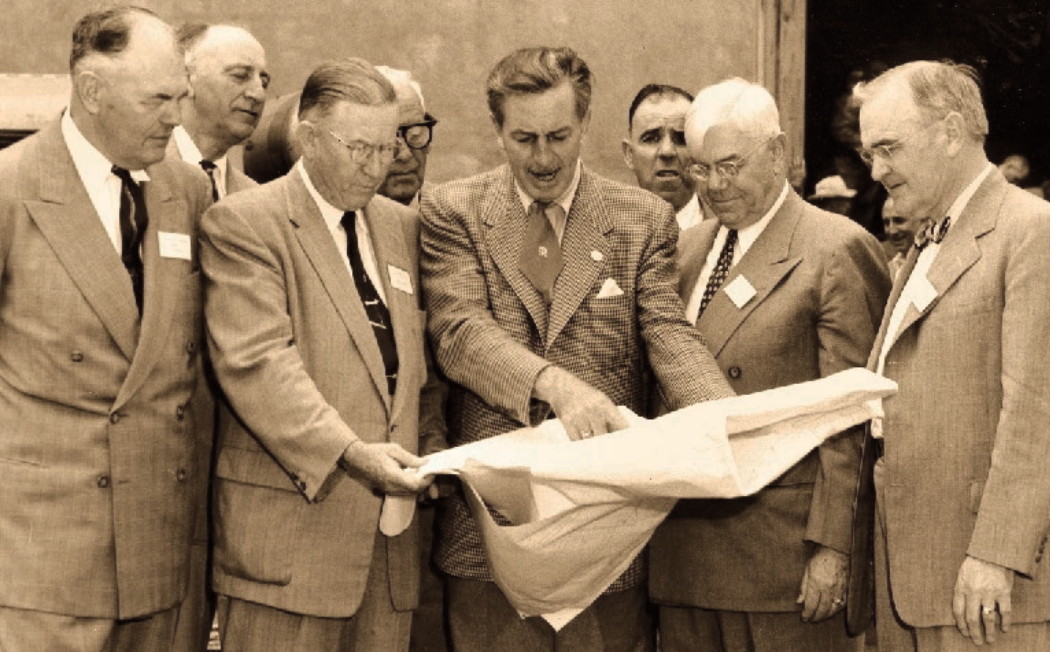
Walt shows his Disneyland blueprints to Orange County officials in December 1954. Photo: Orange County Archives
And media critic Neal Gabler told us, “Walt Disney was an obsessive man. That obsessive quality made him passionate and kept him focused on his dreams. Of all the successful people I have ever studied, Walt was the most intensely focused on his goals. His ideas possessed him.”
One of Walt’s obsessions was a magically eccentric governess named Mary Poppins. But Walt had a problem: The creator of the Mary Poppins, P. L. Travers, refused to sell him the movie rights. In fact, Walt spent more than two decades, from 1938 to 1961, trying to convince her to part with the rights. He made overtures, sent her gifts, and engaged in on-again-off-again negotiations —but she was convinced that no film studio could do justice to Mary Poppins.
Finally, persistence paid off and Walt persuaded Ms. Travers to grant him the rights. But once the film went into production, she battled Walt over every detail. She fought him over the script, the music, the dialogue, the casting, the animation, and on and on. She was tough — but Walt was determined. Ultimately, he got the film made his way.
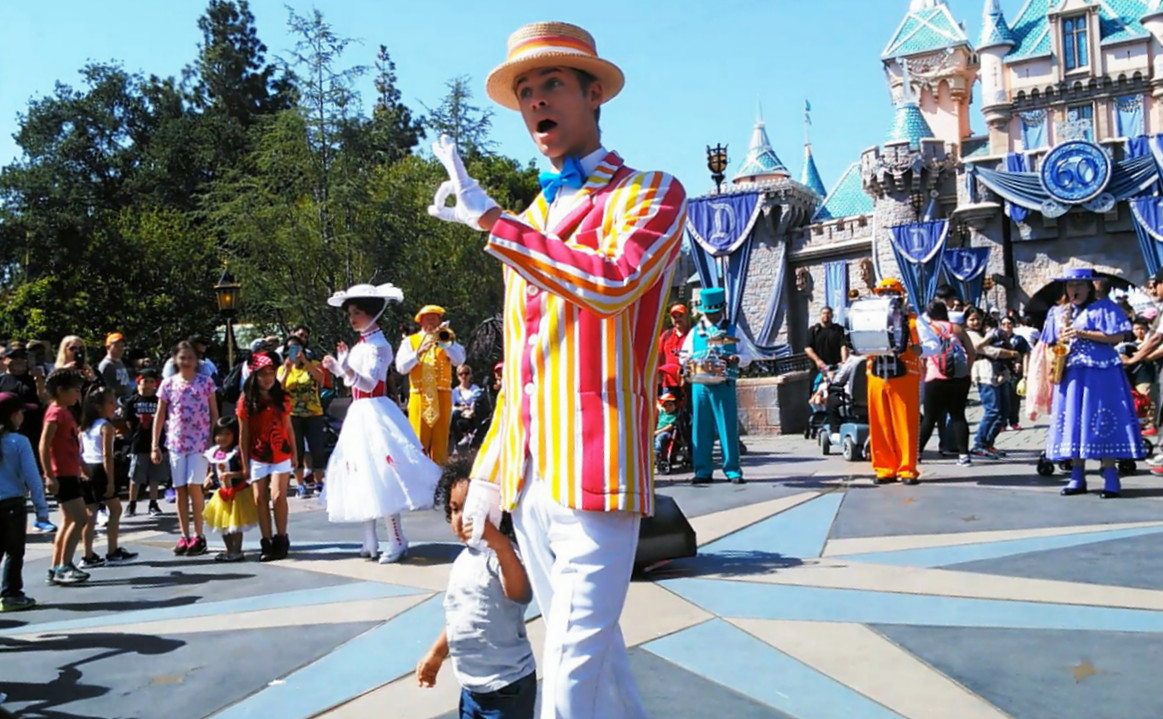
Walt once explained the importance of maintaining an obsessive focus on your goals in order to achieve success: “A person should set his goals as early as he can and devote all his energy and talent to getting there. With enough effort, he may achieve it. Or he may find something that is even more rewarding. But in the end, no matter what the outcome, he will know he has been alive.”
Writing is challenging work. It takes time and focus — and you’ll face opposition and even ridicule from the very people who ought to be in your corner. Learn from Walt. Never give up. Write your obsessions, and be obsessed with your dreams — and one day, your books and stories will bring happiness to the world.
Insight No. 4: Synergize with Fellow Writers
I define synergy as a process by which people work creatively together so that the whole is greater than the sum of the parts. Synergy is a way to get more energy out of a system than you put into it. I think Walt Disney must have invented synergy. He assembled teams of talented people to turn his dreams into reality, and the result was always greater than the sum of the parts. Walt carefully selected the best people for every project. He’d mix skills, talents, and personalities like paints on an artist’s palette.
When I co-wrote How to Be like Walt with Pat Williams, artist and songwriter X Atencio told us, “Walt had an uncanny knack for discovering talent. He’d see talent in people that they didn’t even see in themselves. I had been an animator all those years. One day Walt said, ‘I want you to write the script for Pirates of the Caribbean. There’ll be scenes with pirates and townspeople and so forth, and I want you to write all the dialogue.’”
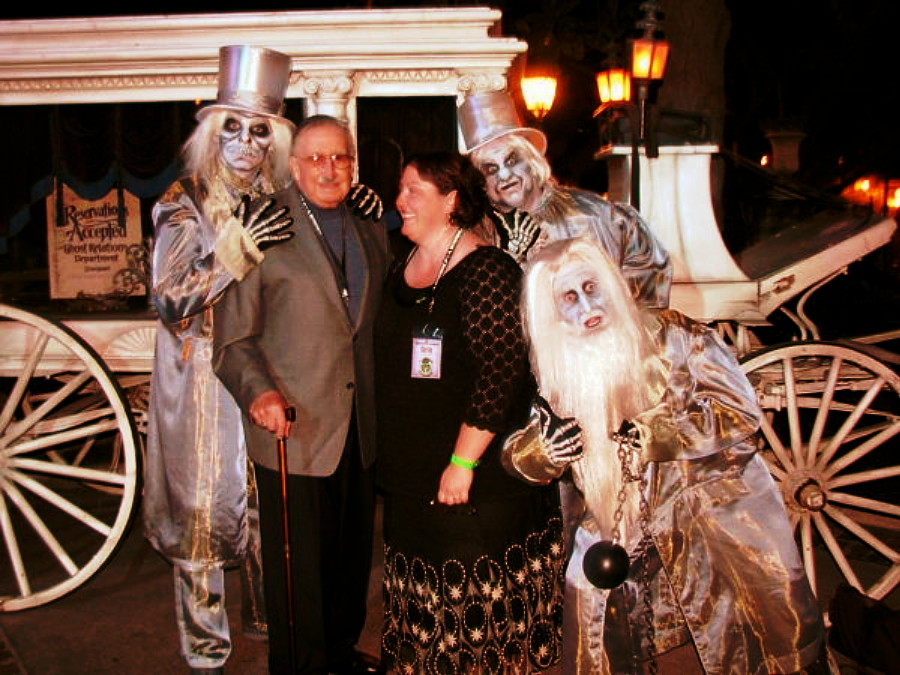
Walt even assigned X to write the Pirates theme song — and the result was the unforgettable tune, “Yo Ho, Yo Ho, A Pirate’s Life for Me.” It’s hard to believe X had never written a song before.
The essence of synergy is valuing the differences of other people. You and I don’t think alike, and we don’t have the same interests, talents, or experiences. This means you can supply what I lack, and I can supply what you lack, and together we can be far more creative than we could ever be alone. This means setting aside our own egos. It means opening ourselves to new ideas and different perspectives. It means accepting criticism and advice from editors and fellow writers.
A friend of mine is part of a group of professional novelists who regularly gather for a weekend of mutual encouragement and inspiration. They write in different genres — romance, thriller, mystery, fantasy — yet they always find that their differences turn out to be strengths. They critique each other’s work, they provide solutions for each other’s writing problems, and they motivate each other to keep reaching for their goals.
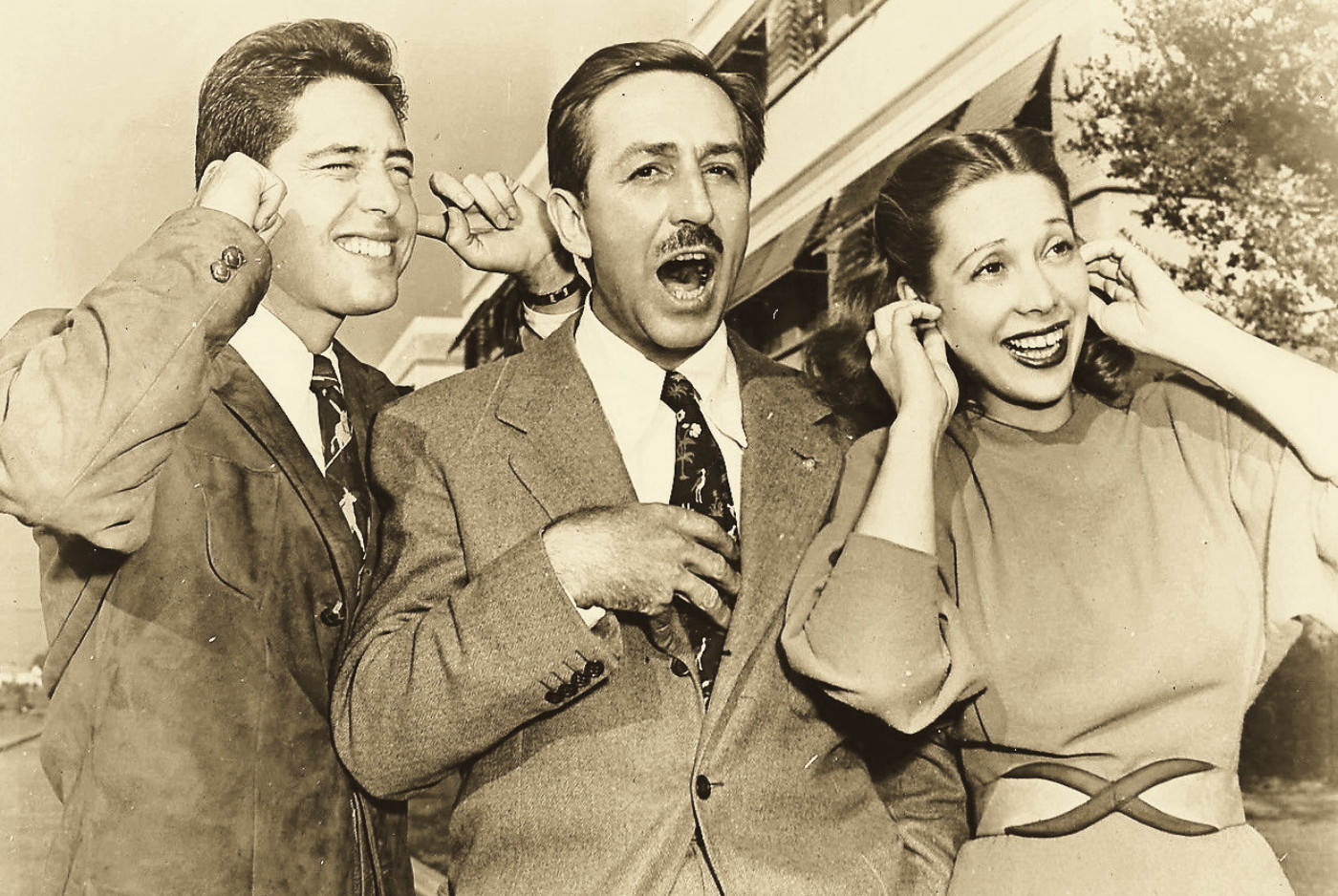 How do you find a writers group? Here are some suggestions:
How do you find a writers group? Here are some suggestions:
Google your city and the search term “writers group” (in quotes) and some groups or meetings in your area should pop up.
Attend a regional writers conference and talk to the people you meet (for a list of writers conferences, consult the Guide to Writers Conferences & Writing Workshops).
Professional writers’ associations often have local chapters where you can meet fellow writers: Society of Children’s Book Writers and Illustrators, Horror Writers Association, Sisters in Crime, Mystery Writers of America, Romance Writers of America, and so forth. Some of these associations have member directories so that you can find fellow writers in your area.
National Novel Writing Month also supports local and online writers groups.
Meetup.com is a website that connects people with common interests; the Meetup page for writers is at https://www.meetup.com/topics/writing/.
You can also find local and online writers groups via Twitter, Goodreads, Facebook, and LinkedIn.
So follow Walt’s example. Mine your life. Act out your creations. Pursue your obsessions. Value differences and draw upon the synergistic strengths of other writers.
Then go build your castles and make some magic.
Author’s note: This column was originally posted, in a substantially different form, at Joanna Penn’s The Creative Penn website.
Discover the uninhibited creative power to write faster and more brilliantly than ever before. Read Writing in Overdrive: Write Faster, Write Freely, Write Brilliantly by Jim Denney.
Trade paperback edition $7.75.
